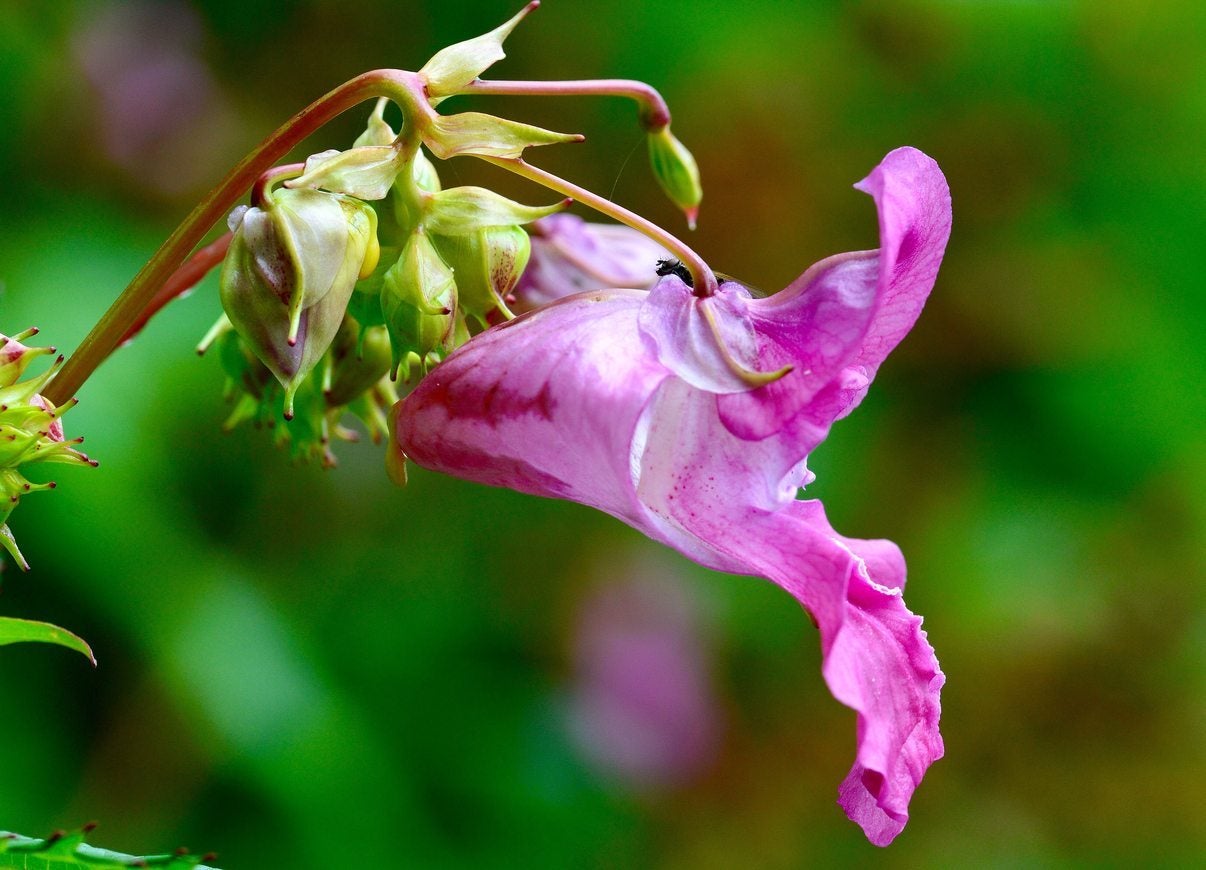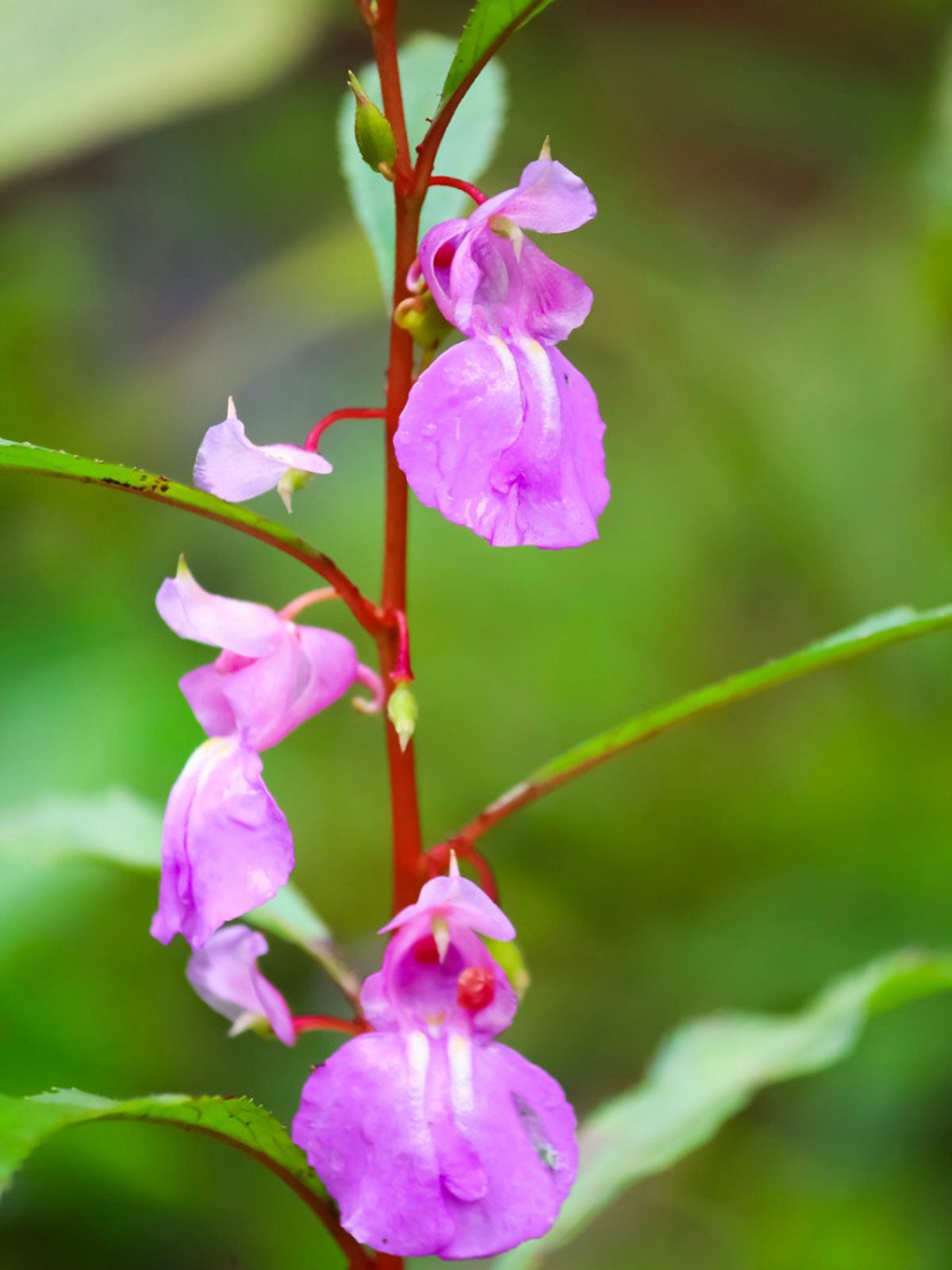Himalayan Balsam Control: Tips On Managing Himalayan Balsam Plants


Himalayan balsam (Impatiens glandulifera) is a very attractive but problematic plant, especially in the British Isles. While it comes from Asia, it has spread into other habitats, where it pushes out native plants and can wreak serious havoc on the environment. Keep reading to learn more about how to control Himalayan balsam plants.
Is Himalayan Balsam Invasive?
Himalayan balsam plants are native to Asia. In the early 19th century, they were brought to the British Isles to be planted in gardens, and before long they escaped into the wild, where they continue to cause a number of serious problems. The plant is attracted to damp areas like riverbanks, where it grows in clusters that can reach 10 feet (3 m.) in height. Since it is so tall, it will often shade out shorter native plants. Himalayan balsam is an annual, however, and it dies back in the winter, leaving bare spaces that would normally be inhabited by native grasses. This leaves the riverbanks vulnerable to serious erosion. It is also a vigorous producer of nectar, which draws pollinators away from native plants, putting their pollination and reproduction in jeopardy. It should not be planted, and Himalayan balsam control should be implemented if you find it on your property.
How to Control Himalayan Balsam
Controlling Himalayan balsam is a two-part endeavor – removing existing plants and preventing the spread of seed. Like other balsam flowers, the plant reproduces by seed, and it will put out up to 800 of them every year. These seeds can travel a short distance through the air or miles and miles if they get caught up in a river or stream. It’s important to time your Himalayan balsam control so you don’t inadvertently spread more seeds. The best time is early to midsummer, before the seeds have matured. The most effective method of controlling Himalayan balsam is cutting and hand pulling. If you’re getting rid of Himalayan balsam plants by hand, let the cut plants lie on the ground in the sun for a few days to dry out and die before composting them. Herbicides also work but only as a last resort.
Gardening tips, videos, info and more delivered right to your inbox!
Sign up for the Gardening Know How newsletter today and receive a free copy of our e-book "How to Grow Delicious Tomatoes".

The only child of a horticulturist and an English teacher, Liz Baessler was destined to become a gardening editor. She has been with Gardening Know how since 2015, and a Senior Editor since 2020. She holds a BA in English from Brandeis University and an MA in English from the University of Geneva, Switzerland. After years of gardening in containers and community garden plots, she finally has a backyard of her own, which she is systematically filling with vegetables and flowers.
-
 Zinnias On Repeat: 10 Glorious Cut-And-Come-Again Varieties For Endless Summer Bouquets
Zinnias On Repeat: 10 Glorious Cut-And-Come-Again Varieties For Endless Summer BouquetsThese zinnia varieties keep giving all summer, making them the perfect choice for dedicated cutting gardens – or just the occasional homegrown bouquet.
By Ellen Wells
-
 Create A Romantic Garden Straight Out Of Bridgerton: Regency Era Romance In Your Garden
Create A Romantic Garden Straight Out Of Bridgerton: Regency Era Romance In Your GardenTry some romantic garden ideas straight out of Bridgerton. Flowers and gardens in the Regency era were lush and charming and you can get the same look!
By Bonnie L. Grant
